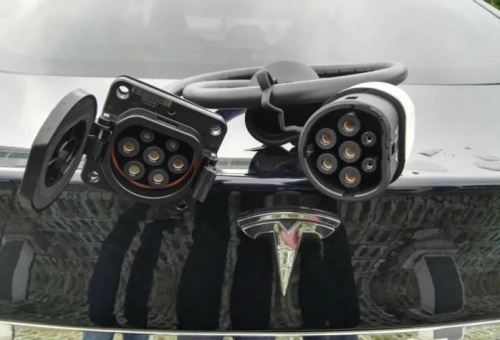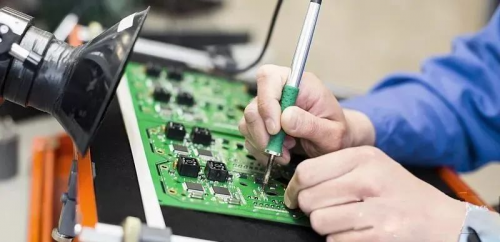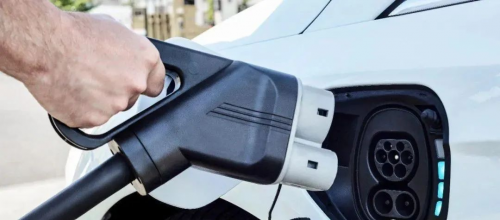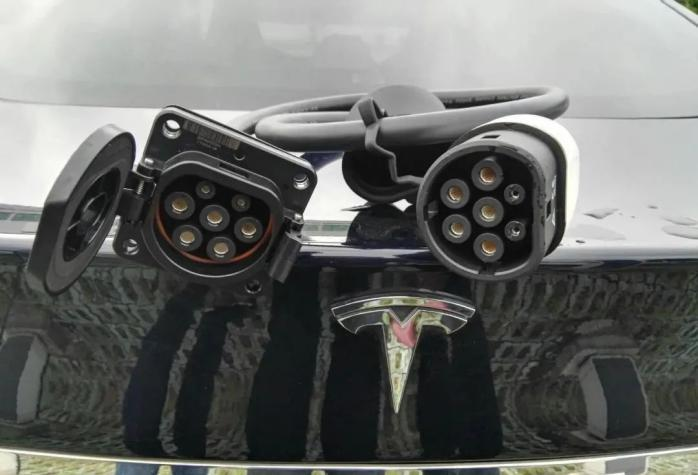Pure electric new energy vehicles have become the general trend of the automotive industry. However, as it is difficult for electric vehicles to make breakthroughs in battery technology in a short period of time, charging facilities are widely deployed, hoping to solve the worries of car owners through sufficient charging equipment. As a crucial component of charging equipment, electric vehicle charging connectors are facing direct conflicts due to different standards in different countries. Here we sort out the various electric vehicle charging connector standards in the world.
1. Combo Connector
Combo socket allows slow and fast charging of electric vehicles. It is currently the most widely used socket type in Europe. Audi, BMW, Chrysler, Daimler, Ford, GM, Porsche and Volkswagen are all equipped with the charging interface developed by SAE (Society of Automotive Engineers).
On October 2, 2012, the SAE J1772 draft revision voted by the relevant SAE committee members became the only official DC charging standard in the world. The core of the standard for DC fast charging based on the J1772 revision is the Combo Connector.
The previous version of the standard (developed in 2010) clarified the specifications of the basic J1772 connector for AC charging, with a lower charging level (AC Level 1 for 120V and Level 2 for 240V). This basic connector has been widely used today and is compatible with Nissan Leaf, Chevrolet Volt and Mitsubishi i-MiEV electric vehicles. The Combo Connector in the new version of the J1772 standard formulated in 2012 has two more pins in addition to all the original functions, which can be used for DC fast charging, but it is not compatible with the older electric vehicles currently produced.
- Advantages: The biggest advantage of the Combo Connector is that in the future, automakers can use a socket on their new models, which is not only suitable for the first-generation smaller basic AC connector, but also for the second-generation larger Combo Connector, which can provide DC and AC currents, charging at two different speeds.
- Disadvantages: In fast charging mode, the charging station needs to provide a maximum voltage of 500 volts and a current of 200 amps.

2. Tesla Connector
Tesla cars have their own charging standards, claiming that they can be fully charged in 30 minutes to run more than 300 kilometers. Therefore, the maximum capacity of its charging socket can reach 120kw and the maximum current can reach 80A.
At present, Tesla has 908 super charging stations in the United States. In order to enter China, Tesla has also established 7 super charging stations in China, 3 in Shanghai, 2 in Beijing, 1 in Hangzhou, and 1 in Shenzhen. In addition, in order to better integrate into various regions, Tesla plans to give up control over charging standards and adopt national standards of various countries, which it has already implemented in China.
- Advantages: advanced technology and high charging efficiency.
- Disadvantages: contrary to national standards of various countries, it is difficult to increase sales without compromise; after compromise, charging efficiency will be discounted, which is in a dilemma.
3. CCS Connector
In order to change the chaotic status quo of charging interface standards, the eight major American and German manufacturers Ford, GM, Chrysler, Audi, BMW, Mercedes-Benz, Volkswagen and Porsche released the “Combined Charging System” in 2012. “Combined Charging System” (CCS) standard. The
“Combined Charging System” can unify all current charging interfaces, so that one interface can complete four modes: single-phase AC charging, fast three-phase AC charging, home DC charging and overspeed DC charging.
AE has selected the combined charging system as its standard. In addition to SAE, the European Automobile Manufacturers Association (ACEA) has also announced that it has selected the combined charging system as the DC/AC charging interface, which will be used for all plug-in electric vehicles sold in Europe from 2017. Since Germany and China unified the electric vehicle charging standards last year, China has also joined the European and American camp, bringing unprecedented opportunities for the development of electric vehicles in China. ZINORO 1E, Audi A3e-tron, BAIC E150EV, BMW i3, DENZA, Volkswagen e-up, Changan Eado EV and SmartEV all belong to the “CCS” standard camp.
- Advantages: BMW, Daimler and Volkswagen, three German automakers, will increase their investment in electric vehicles in China, and the CCS standard may be more beneficial to China.
- Disadvantages : Electric vehicles that support the “CCS” standard either have a small sales volume or have just started to be sold.

4. CHAdeMO Connector
CHAdeMO is the abbreviation of CHArge de Move, which is a CHAdeMO socket supported by Nissan and Mitsubishi Motors in Japan. CHAdeMO means “charging time is as short as a tea break” when translated from Japanese. This DC fast charging socket can provide a maximum charging capacity of 50kw.
Electric vehicle models that support this charging standard include: Nissan Leaf, Mitsubishi Outlander plug-in hybrid, Citroen C-ZERO, Peugeot iON, Citroen Berlingo, Peugeot Partner, Mitsubishi i-MiEV, Mitsubishi MINICAB-MiEV, Mitsubishi MINICAB-MiEV truck, Honda Fit electric version, Mazda DEMIOEV, Subaru Stella plug-in hybrid, Nissan eEV200, etc. It should be noted here that Nissan Leaf and Mitsubishi i-MiEV electric vehicles have two different charging sockets, one of which is suitable for the basic J1772 connector, which is the Combo connector introduced in the first part; the other is a connector suitable for the Japanese CHAdeMO standard.
The fast charging method adopted by CHAdeMO is shown in the figure. The current is controlled by the CAN bus signal of the car. That is, while monitoring the battery status, the current value required for charging is calculated in real time, and a notification is sent to the charger through the communication line; the fast charger receives the current command from the car in time and provides the current according to the specified value.
Through the battery management system, the battery status is monitored while the current is controlled in real time, which fully realizes the functions required for fast and safe charging and ensures that charging is not limited by the universality of the battery. In Japan, 1,154 fast chargers installed according to the CHAdeMO standard are put into use. In the United States, CHAdeMO’s charging stations have also been widely “cast”, and the latest data from the U.S. Department of Energy shows that there are 1,344 CHAdeMO AC fast charging stations in the United States.
- Advantages: In addition to the data control line, CHAdeMO also uses the CAN bus as a communication interface. Due to its superior noise resistance and high error detection capability, the communication stability and reliability are high. Its good charging safety record has been recognized by the industry.
- Disadvantages: CHAdeMO was originally designed with a charging output power of 100 kilowatts, and the connector is very bulky, but the output power of the charging vehicle is only 50 kilowatts.
5. GB/T20234
China issued the “General Requirements for Plugs, Sockets, Vehicle Couplers and Vehicle Inlets for Conductive Charging of Electric Vehicles” (GB/T20234-2006) in 2006. This national standard specifies in detail the connection classification methods for charging currents of 16A, 32A, 250A AC and 400A DC, mainly drawing on the standard proposed by the International Electrotechnical Commission (IEC) in 2003. However, this standard does not specify the number of connection pins, physical dimensions and interface definition of the charging interface.
In 2011, China launched the GB/T20234-2011 recommended standard, which replaced some of the contents in GB/T20234-2006, which stipulates: the rated voltage of AC shall not exceed 690V, the frequency shall be 50Hz, and the rated current shall not exceed 250A; the rated voltage of DC shall not exceed 1000V, and the rated current shall not exceed 400A.
- Advantages: Compared with the 2006 version of the national standard, more charging interface parameters are calibrated in detail.
- Disadvantages: The standard is still not perfect. In addition, it is only a recommended standard and is not enforced.

6. New Generation ChaoJi Charging System
In 2020, the China Electricity Council and the CHAdeMO Agreement Council jointly launched the research work on the ChaoJi industrialization development route, and released the “White Paper on ChaoJi Conductive Charging Technology for Electric Vehicles” and the CHAdeMO3.0 standard respectively.
The ChaoJi charging system can achieve forward compatibility and backward compatibility. A new control guidance circuit scheme has been formulated, and a hard node signal design has been added. When a fault occurs, the signal quantity is used to quickly notify the other end to respond quickly to ensure charging safety. A safety model for the entire system is established, the insulation monitoring performance is optimized, and a series of safety issues such as I2t, y capacitance, PE wire selection, maximum short-circuit capacity, and PE disconnection are clarified. At the same time, a re-evaluation and design was carried out on the thermal management system, and a test method for the charging connection device was proposed.
The ChaoJi charging interface adopts a 7-pin end face design scheme, with a voltage level of up to 1000 (1500) V and a maximum current of up to 600A. The ChaoJi charging interface is designed to reduce the overall size, optimize the matching tolerance, reduce the size of the power terminal, and meet the IPXXB safety requirements. At the same time, the physical plug-in guide is designed to deepen the insertion depth of the socket front guide, which meets the ergonomic requirements.
The ChaoJi charging system does not simply refer to a high-power charging interface. It is a set of systematic DC charging solutions for electric vehicles, including control guidance circuits, communication protocols, connection device design and compatibility, charging system safety, and thermal management under high-power conditions. The ChaoJi charging system is a unified solution for the world, so that the same electric vehicle in different countries can be used in the charging system of the corresponding country.
Summarize
The new energy vehicles on the market today have different charging equipment standards due to brand differences, and a single type of charging connector structure cannot meet all models. In addition, the technology in the field of new energy vehicles is still in the process of maturing. The charging piles and charging connection systems of many automobile manufacturers are still facing problems such as unstable product design, safety hazards, abnormal charging, incompatibility between vehicles and piles, and lack of testing standards in practical applications and environmental aging.
Nowadays, car companies in various countries have gradually realized that “standards” are the key factor that affects the development prospects of electric vehicles. In recent years, global charging standards have gradually moved from “diversification” to “centralization.” However, to truly achieve unified charging standards, in addition to interface standards, current communication standards are also needed. The former is related to whether the connectors match, and the latter affects whether the plug can be powered when it is inserted. There is still a long way to go to unify the charging standards for electric vehicles. Car companies and governments need to further “relax their attitudes” so that electric vehicles can have a future. It is expected that my country’s leading push for the ChaoJi conductive charging technology standard for electric vehicles will play a greater role in the future.










